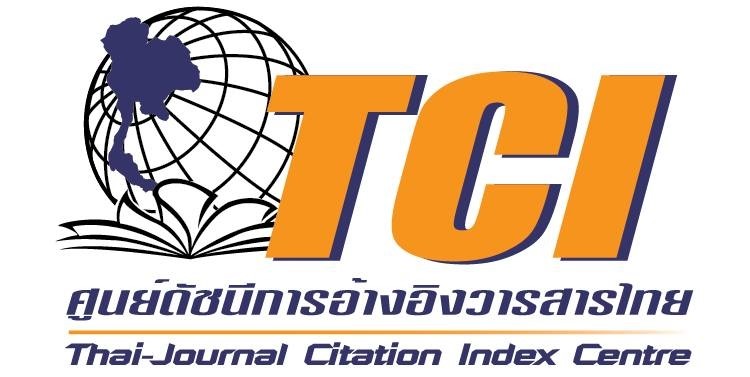ความสัมพันธ์ระหว่างบุคลิกภาพแบบหวั่นไหวทางอารมณ์ ความฉลาดทางอารมณ์ และคุณภาพชีวิตในการทำงาน กับภาวะหมดไฟในการทำงานของพนักงานบริษัทข้ามชาติสัญชาติญี่ปุ่นแห่งหนึ่ง
คำสำคัญ:
ภาวะหมดไฟในการทำงาน, บุคลิกภาพแบบหวั่นไหวทางอารมณ์, ความฉลาดทางอารมณ์, คุณภาพชีวิตในการทำงานบทคัดย่อ
การวิจัยครั้งนี้ มีวัตถุประสงค์เพื่อ 1) ศึกษาระดับภาวะหมดไฟในการทำงาน บุคลิกภาพแบบหวั่นไหวทางอารมณ์ ความฉลาดทางอารมณ์ และคุณภาพชีวิตในการทำงานของพนักงานบริษัทข้ามชาติสัญชาติญี่ปุ่นแห่งหนึ่ง 2) ศึกษาเปรียบเทียบภาวะหมดไฟในการทำงานจำแนกตามปัจจัยส่วนบุคคลของพนักงานบริษัทข้ามชาติสัญชาติญี่ปุ่นแห่งหนึ่ง ได้แก่ เพศ อายุ และระยะเวลาในการทำงานกับบริษัทปัจจุบัน 3) เพื่อศึกษาความสัมพันธ์ระหว่างภาวะหมดไฟในการทำงาน กับบุคลิกภาพแบบหวั่นไหวทางอารมณ์ ความฉลาดทางอารมณ์ และคุณภาพชีวิตในการทำงานของพนักงานบริษัทข้ามชาติสัญชาติญี่ปุ่นแห่งหนึ่ง กลุ่มตัวอย่างจำนวน 120 คน ขนาดของกลุ่มตัวอย่างใช้วิธีการคํานวณจากสูตรยามาเน่ ใช้แบบสอบถามเป็นเครื่องมือในการเก็บข้อมูล ผลการวิจัยพบว่า 1) พนักงานบริษัทข้ามชาติสัญชาติญี่ปุ่นแห่งหนึ่งที่มีเพศต่างกัน มีภาวะหมดไฟในการทำงานแตกต่างกันอย่างมีนัยสำคัญทางสถิติที่ระดับ .05 2) บุคลิกภาพแบบหวั่นไหวทางอารมณ์มีความสัมพันธ์ทางบวกกับภาวะหมดไฟในการทำงานอยู่ในระดับค่อนข้างสูง มีค่าสัมประสิทธิ์สหสัมพันธ์เท่ากับ .638 ความฉลาดทางอารมณ์และคุณภาพชีวิตในการทำงานมีความสัมพันธ์ทางลบกับภาวะหมดไฟในการทำงานในระดับค่อนข้างสูง มีค่าสัมประสิทธิ์สหสัมพันธ์เท่ากับ -.747 และ -.779 อย่างมีนัยสำคัญทางสถิติที่ระดับ .05 ตามลำดับ
References
กรมสุขภาพจิต. (2562). ภาวะหมดไฟในการทำงาน (burnout syndrome). สืบค้น 12 ธันวาคม 2566 จาก https://dmh.go.th/news/view.asp?id=2270.
กัลยา วานิชย์บัญชา. (2562). การวิเคราะห์สถิติขั้นสูงด้วย SPSS for Windows (พิมพ์ครั้งที่ 14). กรุงเทพฯ: สามลดา.
แก้วกานต์ แก้วโกมล และทิพทินนา สมุนทรานนท์. (2562). ความสัมพันธ์ระหว่างบุคลิกภาพห้าองค์ประกอบความสามารถในการกลับคืนสู่สภาพเดิม กับภาวะหมดไฟในการทำงานของพนักงานระดับปฏิบัติการบริษัทธุรกิจพลังงานแห่งหนึ่ง. วารสารวิจัย มหาวิทยาลัยขอนแก่น (ฉบับบัณฑิตศึกษา) สาขามนุษยศาสตร์และสังคมศาสตร์, 7(1), 141-153.
คมศร ฐิติเศรษฐ์. (2565). ภาวะหมดไฟในการทำงานของพนักงานตำแหน่งสินเชื่อของธนาคารพาณิชย์ในจังหวัดกรุงเทพมหานคร. สารนิพนธ์การจัดการมหาบัณฑิต มหาวิทยาลัยมหิดล.
ปรัชญ์ งามสมภาค และประสพชัย พสุนนท์. (2560). อิทธิพลของลักษณะส่วนบุคคล ลักษณะงาน และลักษณะองค์การต่อภาวะหมดไฟในการทำงานของพนักงานรัฐวิสาหกิจในองค์การที่อยู่ระหว่างการปรับโครงสร้างองค์การ:กรณีศึกษาองค์การสวนยาง. วารสารอิเล็กทรอนิกส์การเรียนรู้ทางไกลเชิงนวัตกรรม, 7(1), 82-103.
พรพิมล พงษ์โหมด. (2560). คุณภาพชีวิตในการทำงาน ความเหนื่อยหน่ายในงานและความตั้งใจลาออกของพยาบาลแผนกวิกฤตโรงพยาบาลรัฐแห่งหนึ่ง. งานวิจัยส่วนบุคคลธ์ศิลปศาสตรมหาบัณฑิต สาขาจิตวิทยาอุตสาหกรรมและองค์การ มหาวิทยาลัยธรรมศาสตร์.
พรหมพร ภู่คุ้ม. (2562). ความสัมพันธ์ระหว่างคุณภาพชีวิตในการทำงาน พฤติกรรมต่อต้านการปฏิบัติงานและความตั้งใจในการลาออกของพนักงานบริษัทเอกชนวัยเริ่มทำงาน โดยมีภาวะหมดไฟในการทำงานเป็นตัวแปรส่งผ่าน. การค้นคว้าอิสระวิทยาศาสตรมหาบัณฑิต สาขาวิชาการบริหารการตลาด มหาวิทยาลัยธรรมศาสตร์.
ศุภชัย เครือคำ, สัญญาศรณ์ สวัสดิ์ไธสง และละมัย ร่มเย็น. (2567). อิทธิพลของคุณภาพชีวิตในการทำงานและความผูกพันต่อองค์การที่มีผลต่อภาวะหมดไฟในการทำงานของบุคลากรสำนักงานที่ดินและจัดระบบน้ำเพื่อการเกษตรกรรมที่ 9. วารสารสหวิทยาการวิจัยและวิชาการ, 4(3), 249-274
Best, J. W. (1983). Research in education (4thed.). Englewood Chiffs, NJ: Prentice Hall.
Cooper, R. K., & Sawaf, A. (1997). Executive EQ: emotional intelligence in leadership and organizations. New York: Grosset/Putnam.
Costa, P. T., Jr., & McCrae, R. R. (1992). Revised NEO Personality Inventory (NEO-PI-R) And NEO Five-Factor Inventory (NEO-FFI) Professional manual. Odessa, FL: Psychological Assessment Resources.
Costa, P. T., & McCrae, R. R. (2006). Trait and Factor Theories. In M. Hersen, & J.C. Thomas (Eds.), Comprehensive Handbook of Personality and Psychopathology. Hoboken: John Wiley & Sons, Inc.
De Mendonça, N. R. F., de Santana, A. N. de, & Bueno, J. M. H. (2023). The Relationship between Job Burnout and Emotional Intelligence: A Meta-Analysis. Revista Psicologia: Organizações & Trabalho, 23(2), 2471-2478.
Goleman, D. (1998). Working with Emotional Intelligence. London: Bloomsbury Publishing Plc.
Maslach, C., & Jackson, S. E. (1986). Maslach Burnout Inventory (2nd ed.). Palo Alto, CA: Consulting Psychologists Press.
Pines, A. M., Aronson, E., & Kafry, D. (1981). Burnout: From tedium to personal growth. New York: The Free Press.
Walton, R. E., (1973). Quality of Work Life: What Is It? Sloan Management Review, 15, 11-12.
Walton, R. E. (1975). Criteria for Quality of Working Life. In L.E. Davis, A.B. Cherns (Eds.), The Quality of Working. New York: The Free Press, Life.
World Health Organization. (2019). Burnout an 'occupational phenomenon': International Classification of Diseases. Retrieved May 4, 2024 from https://www.who.int/news/item/28-05-2019-burn-out-an-occupational-phenomenon-international-classification-of-diseases.
Yamane, T. (1970). Statistics: An introductory analysis. Tokyo: John Weather Hill.
Downloads
เผยแพร่แล้ว
How to Cite
ฉบับ
บท
License
Copyright (c) 2025 วารสารวิทยาการจัดการ มหาวิทยาลัยราชภัฏสกลนคร

This work is licensed under a Creative Commons Attribution-NonCommercial 4.0 International License.
บทความที่ตีพิมพ์ในวารสารวิทยาการจัดการ มหาวิทยาลัยราชภัฏสกลนคร เป็นทัศนะ ลิขสิทธิ์ และความรับผิดชอบของผู้เขียนเจ้าของผลงาน






